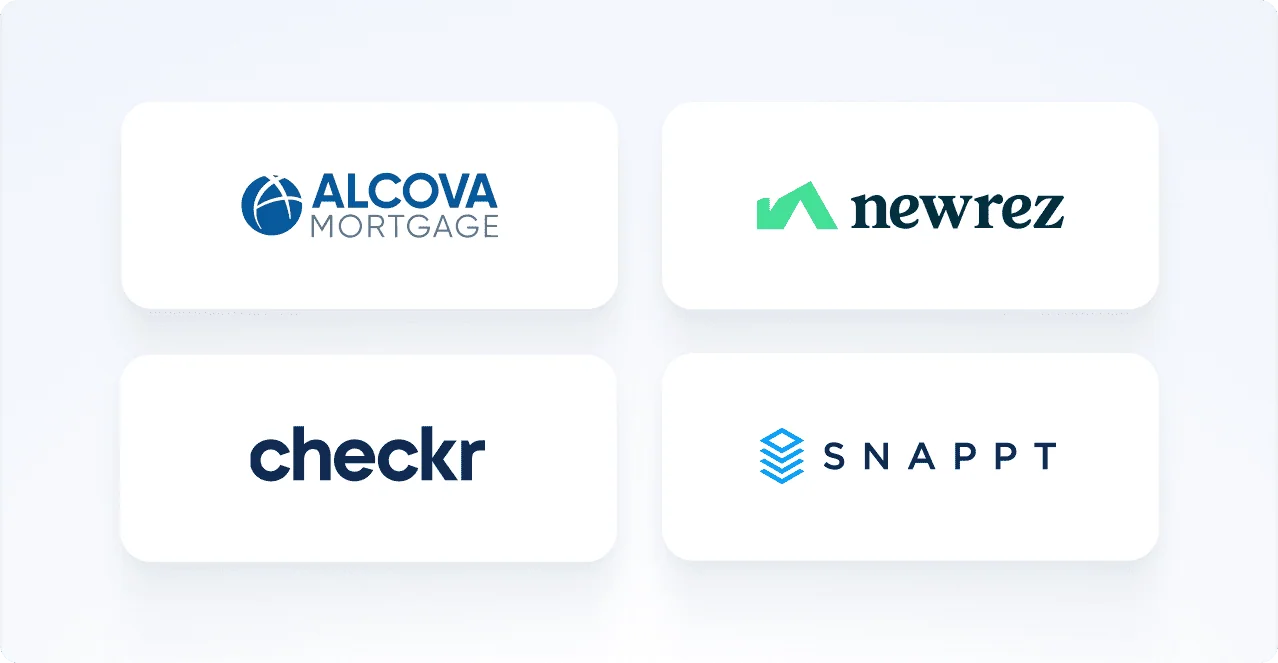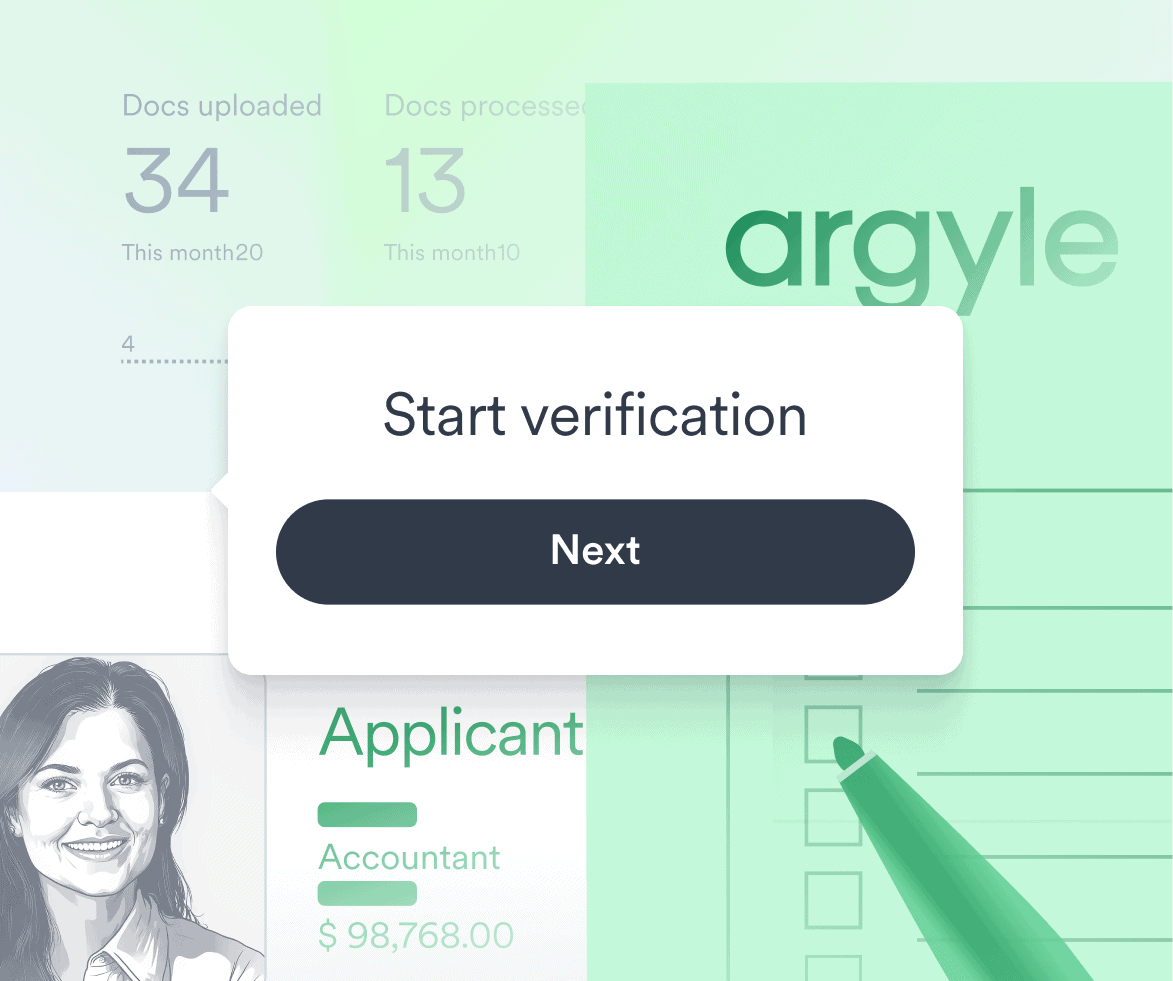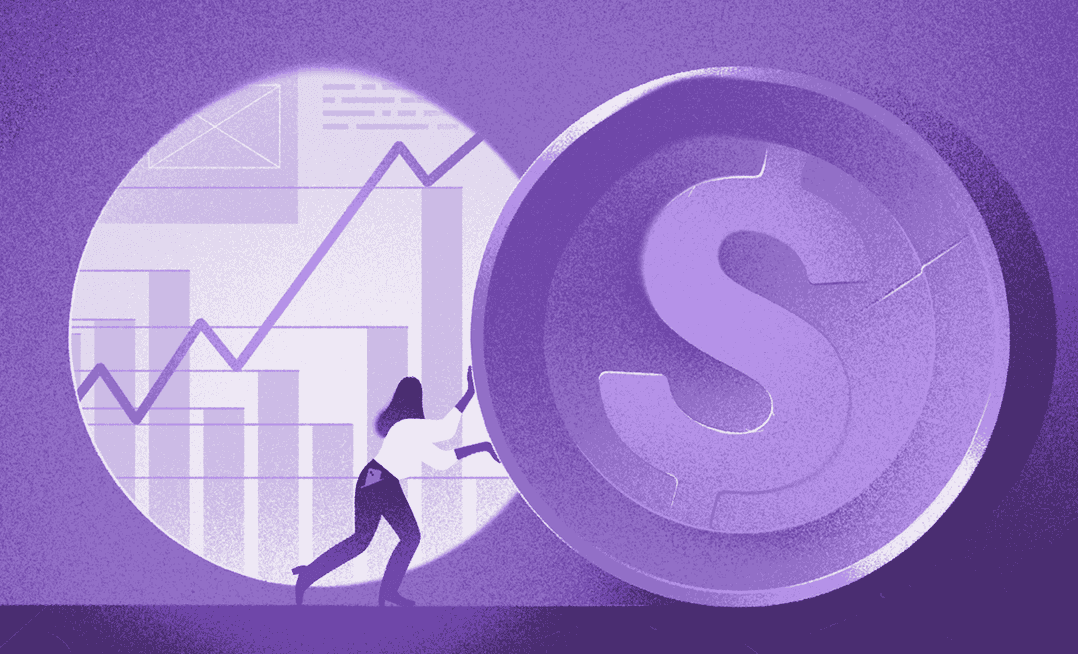Read the full Q&A here or register to watch on-demand.
Our first live webinar tackled the current lending environment and the value of using alternative data sources to expand your borrower market.
With shifts in the economy and labor market, credit reports alone are no longer a reliable indicator of financial health—especially when it comes to thin-file or “credit invisible” consumers.
In our first webinar on modern lending, Argyle’s Matthew Gomes sat down with Deena Narayanaswamy, EVP of Credit at Climb Credit, and Jason Hass, former SVP of Partnerships at Pagaya, to explore the challenges of underwriting consumers overlooked by the traditional credit system—and how alternative data sources like payroll connections, bank statements, and bill-pay records can help.
If you missed the live event, you can watch a full recording by visiting our Zoom channel.
Among other topics, our panelists addressed:
What makes consumers “credit-invisible” and how that impacts their ability to qualify for financial services
Where legacy credit reports fall short, especially in our current recessionary environment
How alternative, consumer-permissioned data sources can fill the gaps and paint a more comprehensive picture of financial health
When and how different consumer-permissioned data sources can and should be used
Below, we share six key points from their discussion, as well as the audience questions they fielded—and those they couldn’t get to—during the subsequent Q&A.
Top takeaways:
1. Roughly 62 million adults in the U.S. are considered “credit invisible,” and they lack access to basic financial services.
“Credit-invisible” consumers are those with fewer than five accounts on file with the three major credit bureaus. In the U.S., they tend to be recent immigrants, low-income workers, and young or reticent consumers who haven’t had the opportunity or the desire to establish sufficient credit.
Without a full credit history to rely on, many financial institutions are reluctant to take on risk by extending these consumers services like credit cards, auto loans, and mortgages—putting essential assets like cars and homes out of reach.
2. The post-pandemic economy has thrown credit reports off-kilter.
The large volume of invisible and thin-file consumers is enough to cast doubt on the usefulness of relying solely on credit reports for underwriting. But on top of that, credit reports themselves have been thrown into disarray by the current economic climate.
We are once again facing a recessionary landscape—but one very different from that of 2008. During the Great Recession, high unemployment rates and low benefits meant credit scores remained relatively stable and predictable. But today, unemployment hasn’t risen to expected levels, with consumer pressures instead caused by rising inflation.
That means commission-based workers, especially those selling expensive goods like cars and appliances, may experience a sudden drop in income. These sorts of shifts aren’t immediately detectable in a credit report, which takes time to evidence the impact of macroeconomic trends.
Moreover, federal stimulus programs during the COVID-19 pandemic led many consumers to pay down existing debts, artificially inflating their credit scores. Now that those programs have ended, delinquency rates are on the rise. A credit report may look pristine for a consumer who otherwise has little to no income or cash flow—it shows only the trajectory of debt load over time, not where the money came from or where else it was and is going.
3. Lenders are increasingly turning to alternative data to fill the blind spots in credit reports.
Traditional credit reports can tell you when a consumer received credit, whether they’ve managed it well, and if they’ve paid off debts on time and in full. But these reports are typically 90+ days old and are by nature backward-facing. They can’t tell you about a consumer’s current financial activity and whether they’ve participated in modern lending programs—like buy now, pay later (BNPL) models—that aren’t reported to credit bureaus.
That’s why, in recent years, lenders have increasingly turned to alternative sources like income and employment data, banking data, and bill-pay data to supplement traditional credit scores, minimize risk and fraud, and gain deeper insights into consumers’ financial health—especially as they expand into thin-file and credit-invisible markets.
4. Alternative data reveals both positive and negative financial attributes.
Alternative data can boost lenders’ confidence as they expand into new borrower markets and/or take a closer look at existing ones. For example, it can help identify thin-file or invisible consumers who are successfully managing debts that don’t appear in traditional credit reports. Similarly, it can divulge whether a super-prime credit score was merely the result of a past, one-time payout.
If a consumer’s FICO score is a bit lower than your typical threshold, or they lack official credit data, looking to alternative sources like income and employment data can reveal attributes that round out their financial profile and allow you to make a confident credit decision, including:
Whether they have a steady job and/or regular sources of income
How stable their role is within a given industry, and how much of their pay comes from variable sources like bonuses and commissions
Whether their industry is growing or shrinking, and how it’s responding to trends in the economy and labor market
How their gross income is distributed between taxes, insurance payments, and other deductions, and if they have positive factors (like retirement contributions) or negative factors (like wage garnishments) in their payroll records
How frequently they change jobs or primary bank accounts
Whether they consistently pick up shifts for gig platforms like Uber or DoorDash
5. Alternative data is not one-size-fits-all, and there are nuances to how and when it’s used.
Heavily regulated entities like banks tend to think of consumer-permissioned sources like payroll connections and bank statements under a blanket term of “alternative data,” lumping them in with non-financial details like social media accounts. But different pieces of data function in very different ways and can be used to power specific use cases—beyond just underwriting.
In fact, as consumers continue deeper into the lending journey, the ways to use consumer-permissioned data sources expand, from managing pricing models and lines of credit to detecting fraud and identifying upsell or cross-sell opportunities.
One example is credit limit increases and decreases. In a traditional credit card workflow, if a consumer wants to raise their limit, they’re asked to enter their income. Most platforms don’t run any subsequent verifications, but a consumer-permissioned, real-time payroll connection would allow them to view the details of that consumer’s work and pay and make a more informed decision.
6. Direct payroll connections offer more efficient and accurate access to alternative data.
Historically, some income and employment data has been available through credit bureaus and other non-permissioned sources. But there are several drawbacks, including:
Coverage is limited, since only certain payroll platforms license data to the bureaus.
Outdated, inaccurate data is common, as reports are static and sent intermittently.
Cost is high, since lenders must pay full price for each new report if they want to run reverifications or keep information current.
On the other hand, direct payroll connections through platforms like Argyle stream real-time income and employment data straight from the source, typically with a maximum 24-hour lag.
That not only automates processes like income and employment verification, but also ensures that data is accurate and secure. At a time when it’s becoming easier to successfully fake a paystub or even a bank statement, this can reduce a lender’s risk immensely.
Another benefit of direct payroll connections through Argyle is the granular, shift-level view they provide into a consumer’s employment and earnings. This can help lenders better understand gig workers and other non-traditional workers who typically have fragmented, irregular income, making them notoriously difficult to underwrite. Credit reports and even banking data alone don’t tell the whole story—and may even work against a worker who is actually qualified.
The bottom line
When it comes to underwriting “credit-invisible” consumers—not to mention navigating our current economic climate—traditional credit reports alone can’t provide a reliable view of financial health.
For that, lenders need alternative data sources like payroll connections, bank statements, and bill-pay records that paint a more holistic picture of creditworthiness, allowing them to confidently expand their markets while minimizing their overall risk.









